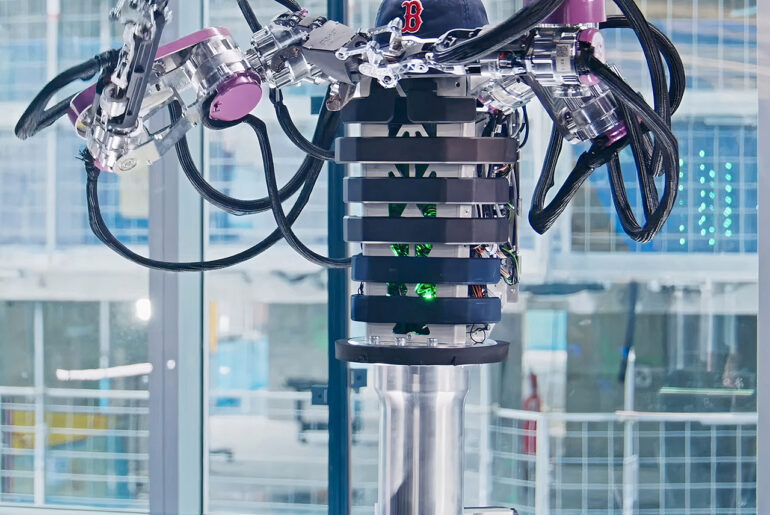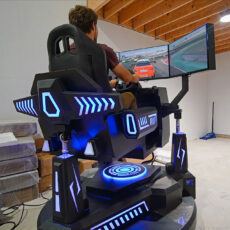
A pair of robots stand seven meters apart on an indoor court, their hands outstretched in the same way that outfielders do. One robot throws a baseball at its partner at 70 mph, which is a pretty good high school fastball, while the other’s receiving arm springs forward in a blur to catch the ball mid-air with a quiet thud against a bespoke glove. Without missing a beat, the glove flicks back, and the robot whips the ball back, creating a flawless arc through the air. All of this was captured on camera in a brief tech demo by RAI Institute researchers last week.
These machines are part of a larger movement to get robot arms to conduct more than just properly planned scientific testing; in other words, to make them fun and athletic. Marc Raibert, the engineer who created Boston Dynamics, founded the RAI Institute in Cambridge, Massachusetts a few years ago. Their concept is simple: build robots that can move at genuine human speeds and have a brain to match. The baseball setup is part of that endeavor, and it makes use of a customized platform that allows the robot arms to move more freely than in a lab setting. In practice, the joints’ low impedance allows them to bend and absorb unexpected stresses without stiffening or over-reacting. A robot arm that tightened on impact may break or send the ball flying in all directions, but these ones yield a little, transforming raw speed into a true catch.
- 【BRILLIANT GIFT IDEA FOR KIDS】It's a big surprise to kids as the robot is up to 15.8 inches in height. With various pioneering ways to play, it...
- 【STEM LEARNING ROBOT】With 10 expressions, 9 flexible joints, and 10 songs, this robot moves more dynamically than typical toys—making playtime...
- 【DIVERSE FUNCTIONS】Gymnastics, storytelling, dance, music, and recording—the Ruko robot enriches childhood with creativity and early artistic...
The robot arms are at the heart of this system, mounted on solid bases that move quietly around the floor. Each one concludes with a full-sized baseball mitt imprinted with “RAI” in strong lettering on the back – a charming touch that pays attention to the game’s old-school appeal. Sensors track the ball from the moment it leaves the other robot’s grasp, putting all of that information into algorithms that tries to predict where it will fall down to the centimeter. The motors then fire in a precisely timed sequence measured in milliseconds to bring the arm into position, a split-second timing job that allowed one robot to catch a throw at 41 miles per hour while accounting for all the bends and dips that a straight-line calculation alone couldn’t handle. Batting adds another layer of intricacy, with the machine sensing the incoming pitch and timing a swing that always connects properly.

Speed is what makes it cool, but precision is what holds everything together. At full speed, these robots can handle exchanges that would exhaust a Little League coach. The 7-meter gap necessitates quick decisions; a ball can cross that distance in under half a second at peak speed. Human partners join in smoothly, lobbing underhanded tosses or stepping up for batting practice, and their pitches are welcomed with the same consistent response.
Every component was optimized for these bursts of movement. The arms are constructed of lightweight materials, carbon fiber rods, and flexible joints that flex when stressed yet snap back firm. The control systems run on off-the-shelf computers, with algorithms that combine video feeds and motion models. Prediction software detects spin and speed before generating arm routes that account for gravity and air resistance. When the ball veers off course, as it frequently does in a real game, the algorithm recalculates on the fly, saving seconds off the response time. Power comes from electric actuators that are silent and responsive, capable of repeating thousands of cycles without stuttering. The battery packs are located low in the bases, keeping the center of gravity stable even during violent swings.
[Source]










